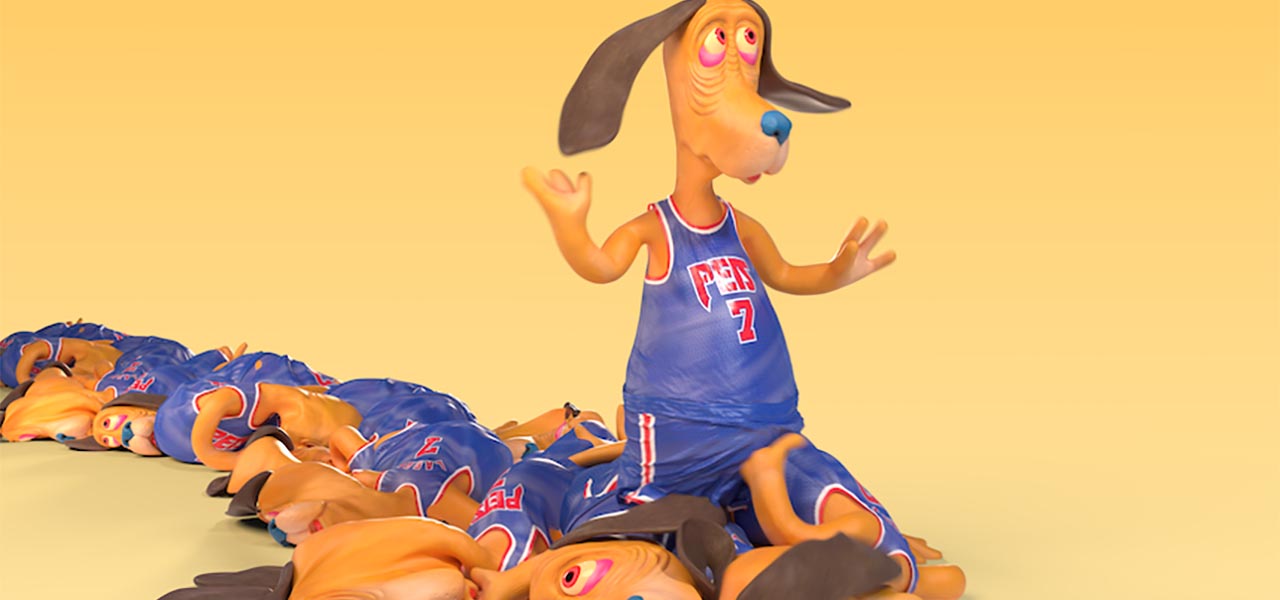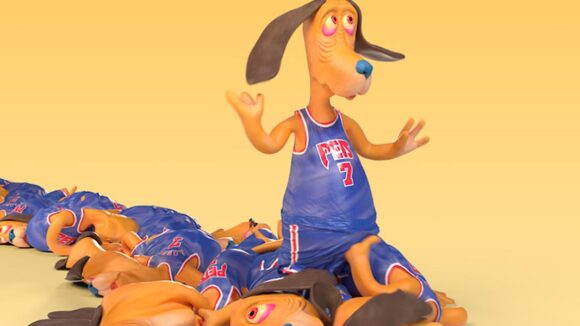

Pictoplasma Founders Reflect On 20 Years Of Running A Character Design Conference
The Pictoplasma Conference is currently celebrating its 20th anniversary in Berlin, Germany, and continues through this weekend.
Over the last couple decades, the conference has filled a unique niche by casting a spotlight on character-driven artwork across all media, from print and illustration to fine art, fashion, and animated film.
Cartoon Brew caught up with the event’s founders Lars Denicke and Peter Thaler to reflect on the event’s evolution and where character design might be headed. The interview follows below.
This year’s conference speaker list features a generous amount of animation artists, in addition to character-focused artists from other crafts. A dozen-and-a-half speakers are scheduled to speak including:
- Joe Bennett, co-creator of Scavengers Reign
- Bora, a French interdisciplinary queer artist who creates a universe where imagination is a form of activism
- Parn Aniwat, a Thai sculptor who creates whimsical toys from chunks of timber
- Joseph Melhuish, London-based 3d artist and animation director
- Sophie Koko Gate, animation filmaker
- Phil Hunt, founding partner and creative director of London’s Studio AKA
- So Lazo, illustrator and artist from El Salvador, whose work is an exploration of magic, clownery, colours, emotions and identity
- Los Calladitos, the Mexican duo of Ariadna Galaz and Jorge Peralta whose murals and animation engage with communities and their legends
For the first time ever, organizers are making the conference available as a fully livestreamed edition, in addition to an in-person event. To learn more about this year’s edition, including accessing the livestream, visit the Pictoplasma website.
Cartoon Brew: How has animation’s presence within the overall Pictoplasma project evolved since you launched it in the the early 2000s?
Lars Denicke and Peter Thaler, founders and artistic directors of Pictoplasma: When we started Pictoplasma back in the year 2000, we were trying to establish an understanding of characters that was independent from the animation medium. We were interested in how characters could enable communication, evoke empathy or put a message through by design, in one image instead of a narrative context – so animation was almost like something the characters had to to emancipate themselves from. But things immediately changed at the very first Pictoplasma Conference in 2004, where we accepted animation submissions, screened a selection of animated shorts, and had great speakers working in animation or artists experimenting with animation.
Many of the shorts we showed were extremely short, they had overlaps to motion graphics, some were music videos, or other experimental formats outside the established animated short film format. That somehow established a certain ‘Pictoplasma look’ at the time, as other festivals weren’t necessarily featuring these. Over the course of the years, this has leveled out, new aesthetics have found their ways into mainstream animation and many festivals around the world are featuring a wide spectrum. Animation has maintained a strong importance for our project – yet, as an interdisciplinary project, we have kept the freedom to show only a small selection of animation while happily mixing things up with graphics, fine art, illustration, or fashion.
What are some new trends you’ve noticed in character design in the last year or two?
Denicke and Thaler: Definitely hybridization, a mix of aesthetics, media, and tools, and an openness for a wider range. More particular, there is a productive use of VR, not as the medium to show or experience animation, but a way to design characters and other elements and bring these into the workflow. At the moment the VR tool is still very much informing the aesthetics, but we are seeing more and more artists pushing the visuals into exciting, new territory. And then more diversity in representation and storytelling, with artists being visible coming from a wider range of places than before.
With the proliferation of generative AI in the creative industries, do you think it will be harder for character-focused artists to break in, and what can human artists do to remain competitive?
Denicke and Thaler: Generally speaking, we sometimes feel by now we must have seen it all, and nothing can possibly surprise us anymore. But then new work or fresh animation submissions come in and blow our minds.
In terms of generative AI, things are evolving rapidly, but we honestly do not see it taking over the job or replacing “human” creativity – at least not in the near future. AI-assisted image generation is definitely not going to magically vanish. Our optimistic hope is that artists will find ways how to integrate it into their workflows, such as sketching or visualizing ideas, but we don’t feel it can take over creative ideation. This is an artistic process and it is inherently human: it is painful, dirty, unreliable, it requires practice, time, endurance, hard work, and maybe even luck.
Image at top: “Larry Loop #7,” a collaboration between Christopher Rutledge (a speaker at this year’s Pictoplasma conference) and Takeshi Murata.

.png)